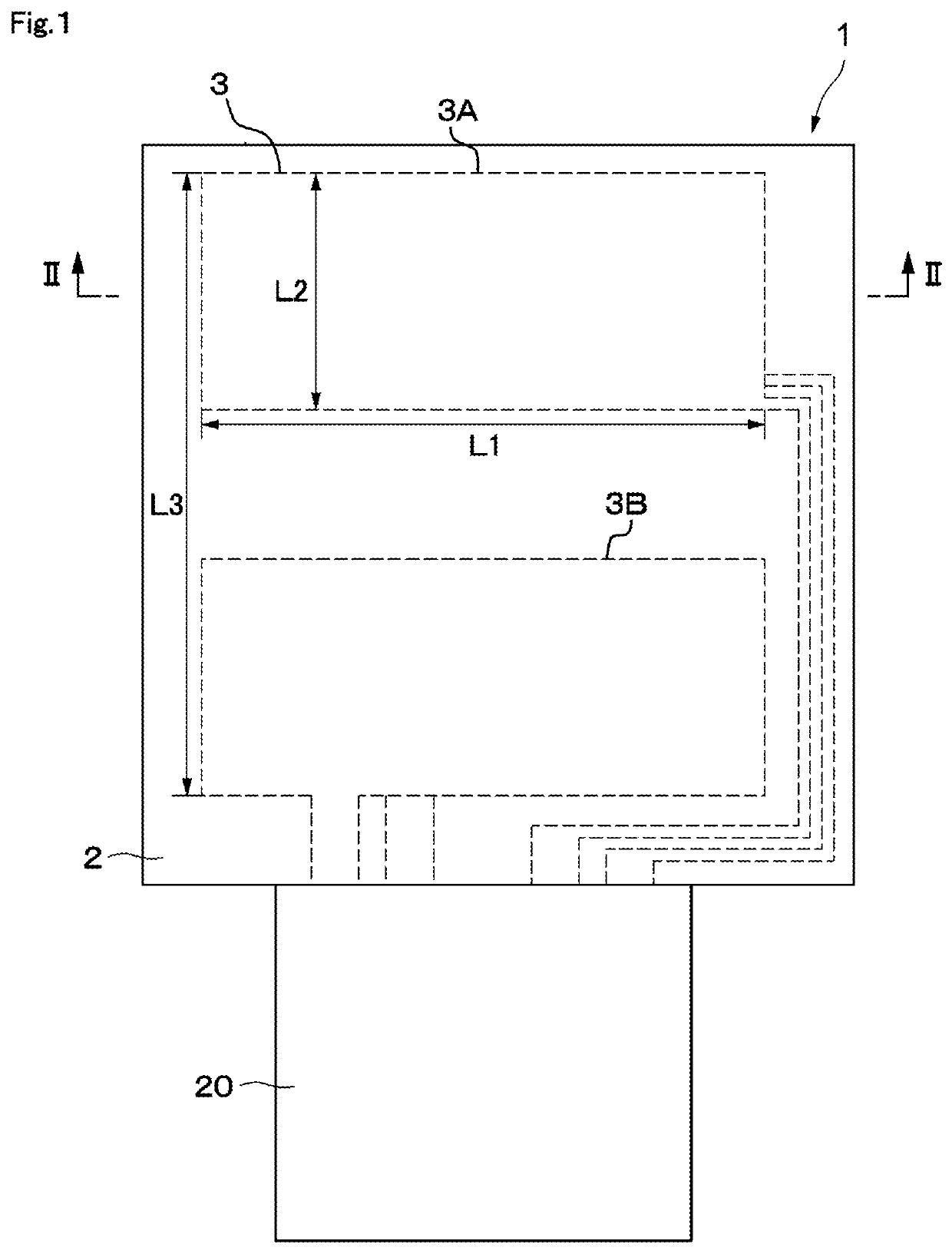Swallowing sensor
a sensor and swallowing technology, applied in the field of swallowing sensors, can solve the problems of increasing measurement variations, difficult to distinguish swallowing from vertical movement of the neck, and difficulty in keeping a constant contact state, so as to reduce the influence of individual differences
- Summary
- Abstract
- Description
- Claims
- Application Information
AI Technical Summary
Benefits of technology
Problems solved by technology
Method used
Image
Examples
first embodiment
[0041]FIG. 1 to FIG. 5 illustrate a swallowing sensor 1 according to the present disclosure. The swallowing sensor 1 includes a sensor portion 2 configured to detect swallowing of the subject 101 (human body), and a body 20 configured to process signals outputted from the sensor portion 2.
[0042]For example, the sensor portion 2 as a whole has a rectangular shape and is located on one end side of the swallowing sensor 1 in a vertical direction (upper side in FIG. 1). As illustrated in FIG. 2, the sensor portion 2 includes a piezoelectric film sensor 3, an insulating film 7, and shield films 8 and 9. As illustrated in FIG. 3, the sensor portion 2 is located within a range of movement of thyroid cartilage 103, which occurs along with swallowing, and is attached to the skin of the anterior neck region 102 of the subject 101.
[0043]The jawbone 104 is located above the thyroid cartilage 103 and the breastbone 105 is located below the thyroid cartilage 103. A pair of the carotid arteries 10...
second embodiment
[0124]The second embodiment provides the structure in which one sensing portion 33A and one sensing portion 33B whose polarities are reversed are arrayed vertically. The piezoelectric film sensor 33 outputs the addition signal Sa obtained by adding together the signals obtained along with the deformation of the plurality of sensing portions 33A and 33B. Therefore, the swallowing determination can be facilitated without increasing the data amount.
[0125]This point is described in detail with reference to FIG. 19. The broken line in FIG. 19 represents an output signal in a comparative example in which the two sensing portions 33A and 33B are connected in parallel with the same polarities (unreversed polarities). The comparative example corresponds to a case of a single sensing portion. As illustrated in FIG. 19, in the case of the comparative example, an upward peak P31 occurs around 1.5 seconds and then two relatively gentle downward peaks P32 and P33 occur. However, the pattern does ...
PUM
 Login to View More
Login to View More Abstract
Description
Claims
Application Information
 Login to View More
Login to View More - R&D
- Intellectual Property
- Life Sciences
- Materials
- Tech Scout
- Unparalleled Data Quality
- Higher Quality Content
- 60% Fewer Hallucinations
Browse by: Latest US Patents, China's latest patents, Technical Efficacy Thesaurus, Application Domain, Technology Topic, Popular Technical Reports.
© 2025 PatSnap. All rights reserved.Legal|Privacy policy|Modern Slavery Act Transparency Statement|Sitemap|About US| Contact US: help@patsnap.com



